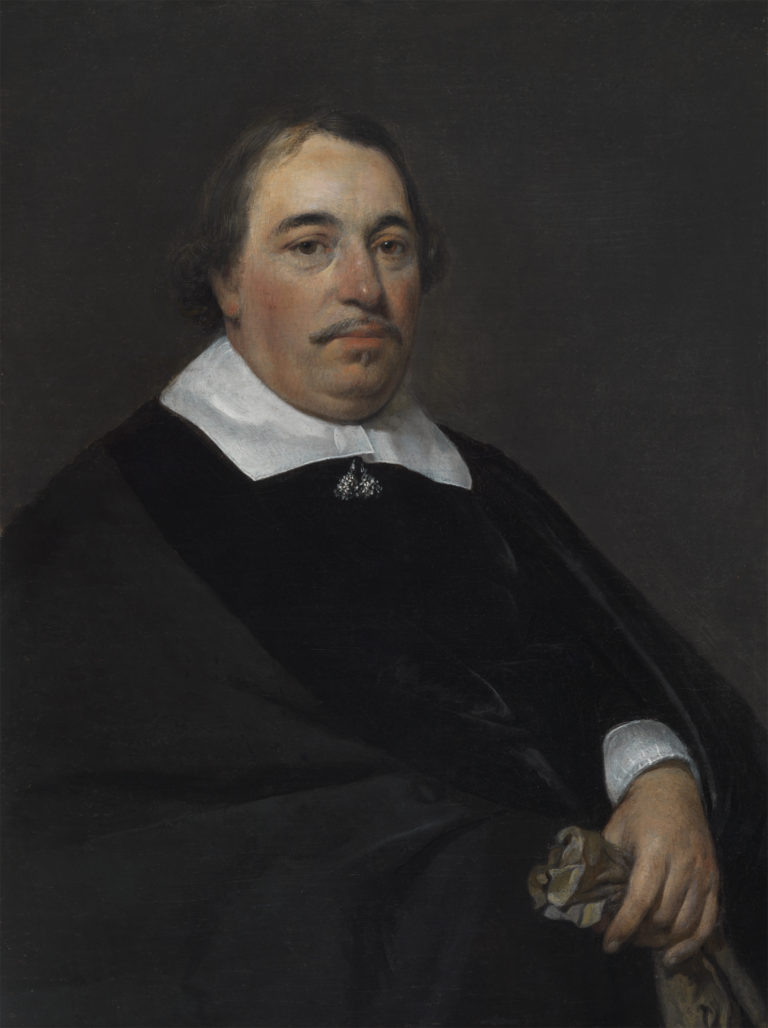This simple half-length portrait demonstrates Gerard ter Borch the Younger’s exceptional ability to convey an effective likeness with a modicum of means. The man, perhaps of early middle age, is dressed plainly in a black costume enlivened only by a simple collar and narrow cuffs of white linen. A black cloak is pulled close around his portly frame, and he clutches a pair of fawn-colored gloves in his left hand.
Portrait of a Man probably dates to about 1653. Together with the Portrait of Jan van Goyen (fig 1) and another portrait of an unidentified sitter (fig 2), both of which date to about 1652–53, The Leiden Collection’s image is among Ter Borch’s earliest half-length portraits in a rectangular format.1 All these paintings depict the subject facing three-quarters to the right, with the solid pyramidal bulk of their figures silhouetted against a neutral background. The sitters are remarkably devoid of pretense, and each regards the viewer in an unusually relaxed and open manner.
Portrait of a Man is painted on a single horizontally grained plank of wood, presumably oak. The edges are not beveled. The panel appears to have been trimmed along the left side and possibly also along the top;2 it may originally have shared the slightly wider proportions of Ter Borch’s Portrait of Jan van Goyen mentioned above.
At the time the painting was sold in 2000 there were two labels on the back of the panel, one indicating that the painting had at one time been in the collection of Georges Mieg, and the other providing an old auction catalogue description with the number “247.” Both labels have since been removed. The Mieg family was one of the leading industrial families in Mulhouse, France; in 1800, together with the Dollfus family, they founded Dollfus-Mieg & Compagnie (DMC), one of the largest European producers of fabric and embroidery thread. Georges Mieg (1865–1924) was an amateur musician and avid supporter of cultural institutions in Mulhouse. Both his father, Mathieu (1821–73), and grandfather, Jean-Georges (1788–1864), were collectors, notably of paintings and objects relating to the history of Mulhouse.3 On the reverse of the panel is a red wax seal. Though worn, the impressed forms are not inconsistent with (and probably represent) the arms of the Mieg family.4
